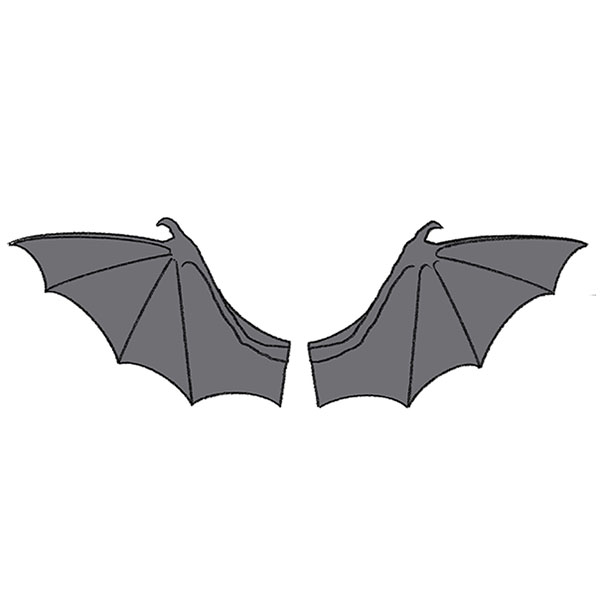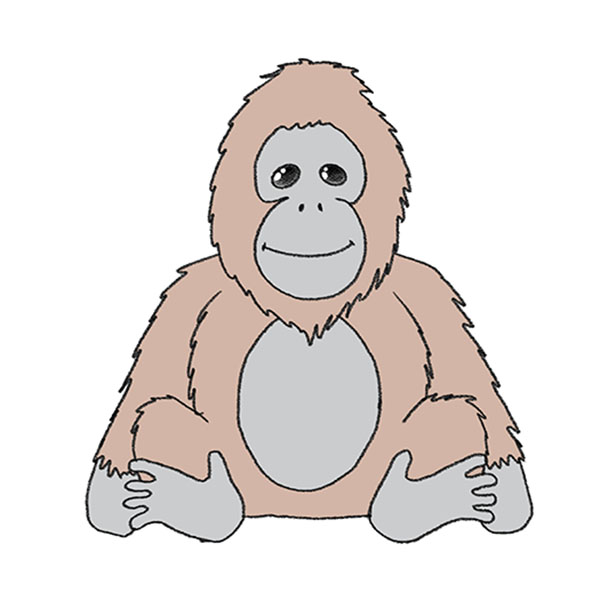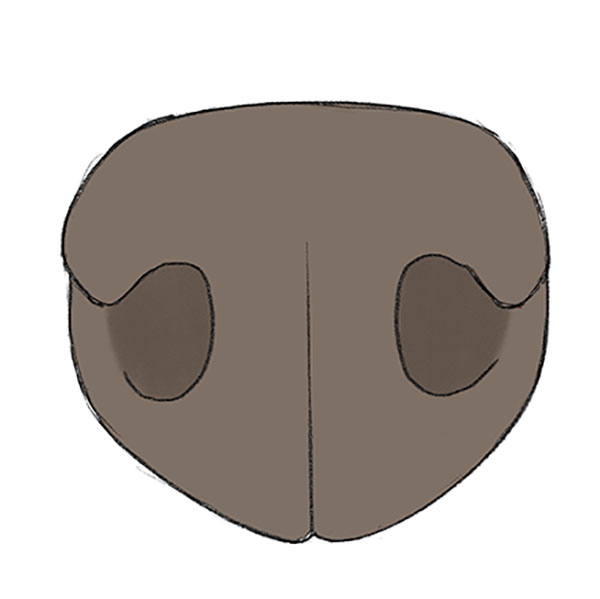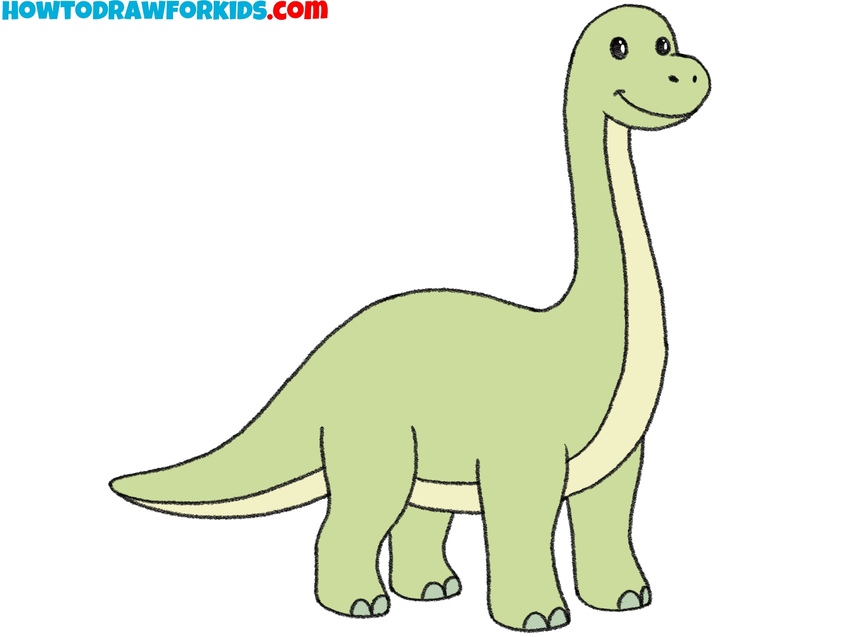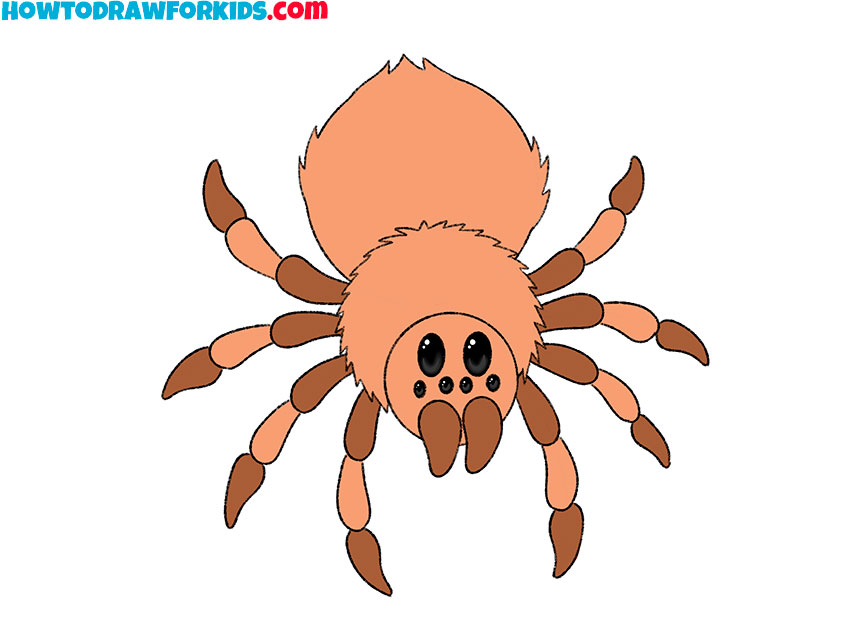How to Draw an Opossum
There are many unusual and fascinating creatures in the world, and one of them is the subject of today’s lesson on how to draw an opossum.

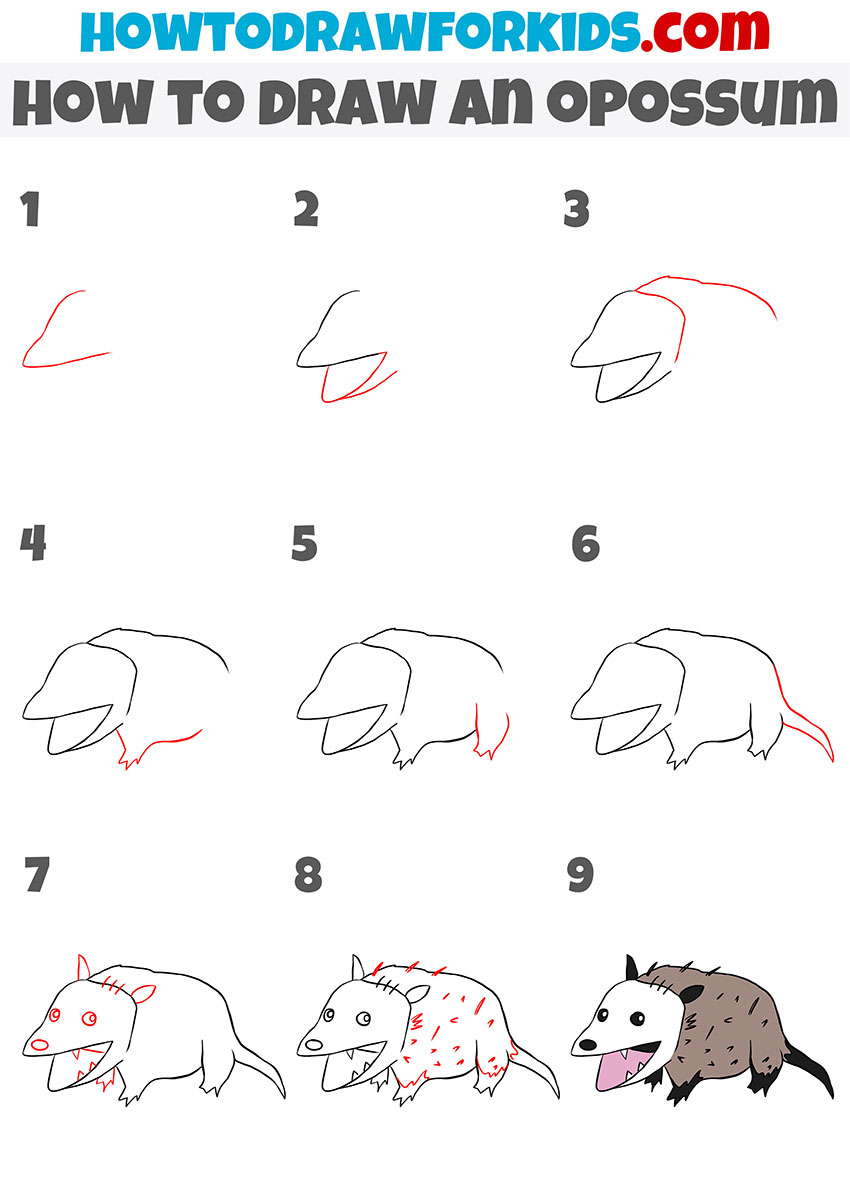
In this drawing lesson I would like to tell and show you how to draw an opossum. If you follow these instructions carefully, you can easily and quickly draw a very cute opossum step by step. This tutorial is made especially for beginners and kids, it consists of only nine simple steps.
An opossum is a mammal that looks like a large rodent. These animals appeared on the planet about a hundred million years ago. The muzzle of the possum is elongated, and the tail, as a rule, is not covered with fur.
The tail of the opossum is strong and thick enough that with the help of it the animal grabs the branches, moving through the trees. And also it is on the tail that opossums hold on to branches during daytime sleep.
The opossum is harmless to humans and quite shy. These animals can be kept at home as pets. So, if you also like this cute animal, you can start sketching an opossum right now and train your animal drawing skills.
Materials
- Pencil
- Paper
- Eraser
- Coloring supplies
Time needed: 25 minutes
How to draw an opossum step by step
- Sketch the top of the head.
Draw a slanted wedge that points left: a straight lower edge for the jaw and a curved upper edge that rises toward the forehead. The front should be rounded to read as an opossum’s nose area. Keep everything light and simple.

- Sketch the animal’s mouth.
Before building the body, establish the mouth opening and skull. Under the snout, draw the lower jaw as a long triangular flap that opens downward. Add a second, shorter line to draw the inner edge of the opossum mouth.

- Sketch the top of the head and back.
From the forehead, draw a smooth dome that turns down behind the cheek, forming the back of the head of the animal. Sketch another line and let this curve continue to the right to start the animal’s back. Keep the back line gentle and slightly arched, as in a crouched stance.

- Draw the front leg of the opossum.
Balance the upper contour with a ground-side line. At the bottom of the lower jaw sketch a small front foot: three short, jagged toes like tiny triangles and a compact pad. From the back of the front leg, draw a short curve for the belly line. Do not add the rear legs yet.
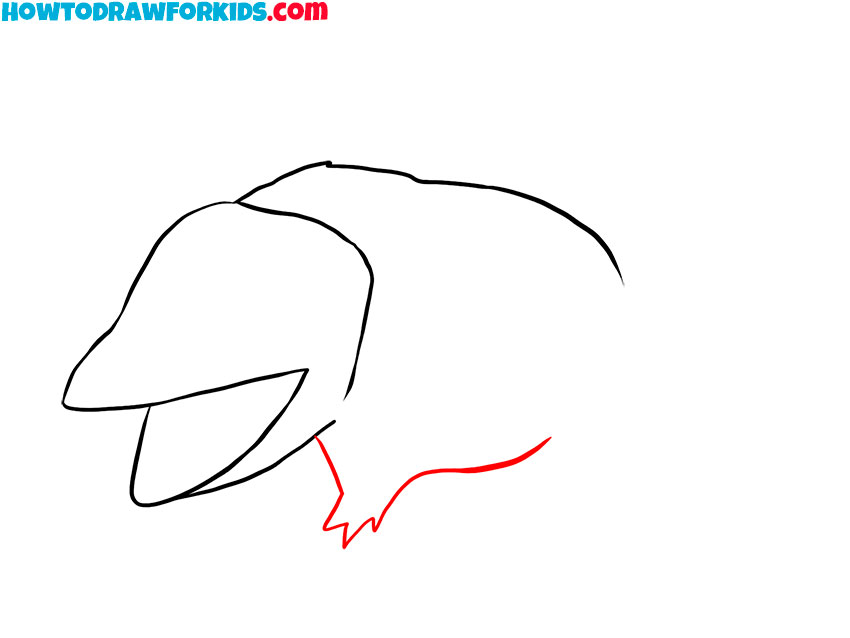
- Sketch the rear leg of the animal.
To finalize the limbs and continue the front half, place the far leg. From the end of the belly curve, drop a short vertical shape to mark the rear leg. Below it, draw a small spiky foot with three short toes. Angle this limb slightly forward.

- Draw the tail of the opossum.
The silhouette of the animal needs a clear back end. From the rump, illustrate the long tail: start with a couple of curved lines flowing right and taper it to a thin point. Keep the tail smooth and simple.
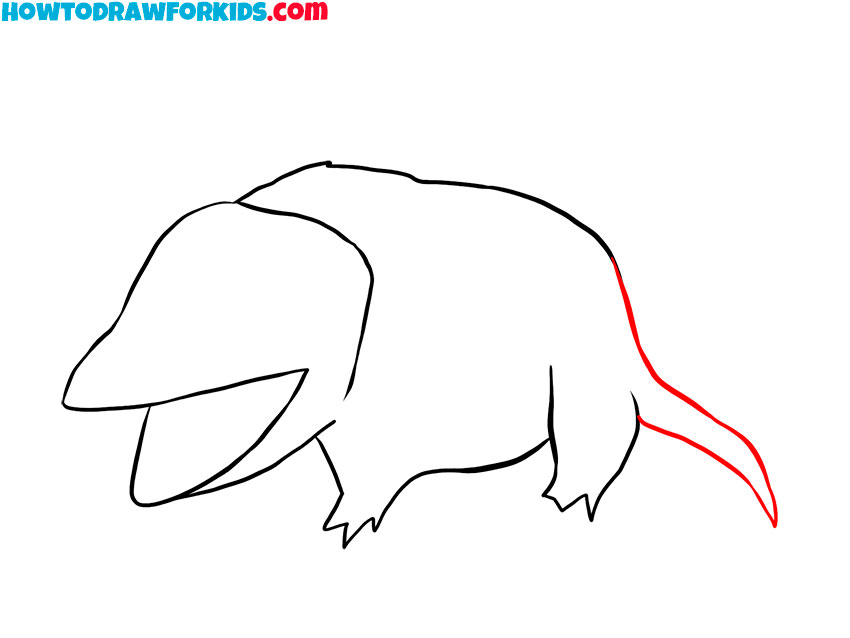
- Draw the animal’s eyes, nose, mouth, and ears.
Recognition of this animal comes from facial details. On the snout, draw a small oval nose near the tip and two round eyes placed high on the face. Add the pointed ears near the top of the animal’s head. Inside the open mouth, sketch several simple triangular teeth along the top and bottom edges.
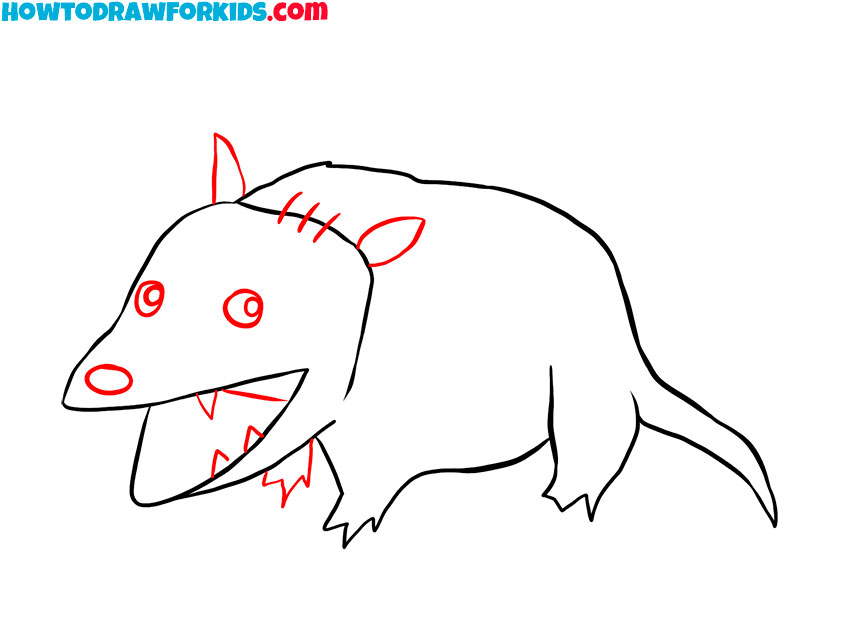
- Clean extra lines and draw short fur.
Cleanup improves the whole drawing before color, and additional details make the sketch look more authentic. Erase extra overlaps, remove any doubled and construction strokes. With a clean outline, add short fur ticks across the body. Draw small, varied dashes on the back, sides, and legs, leaving the face cleaner.
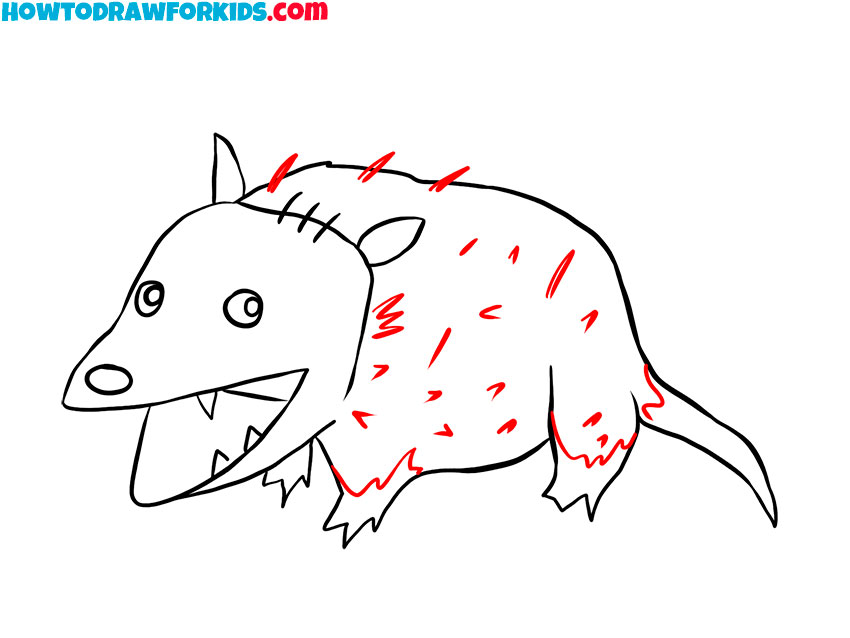
- Paint the opossum with natural tones.
Color separates the pale face from the darker coat and makes your opossum drawing look more realistic. Fill the head front and muzzle with off-white or cream. Paint the ears, feet, and tail tip dark gray to black. Use a medium brown or gray-brown for the body. Color the nose black or pink and the mouth interior a muted purple.

I created a PDF file for you with a short version of this lesson. You can download this file and use this tutorial and other useful materials at any time, even if you do not have an Internet connection.

